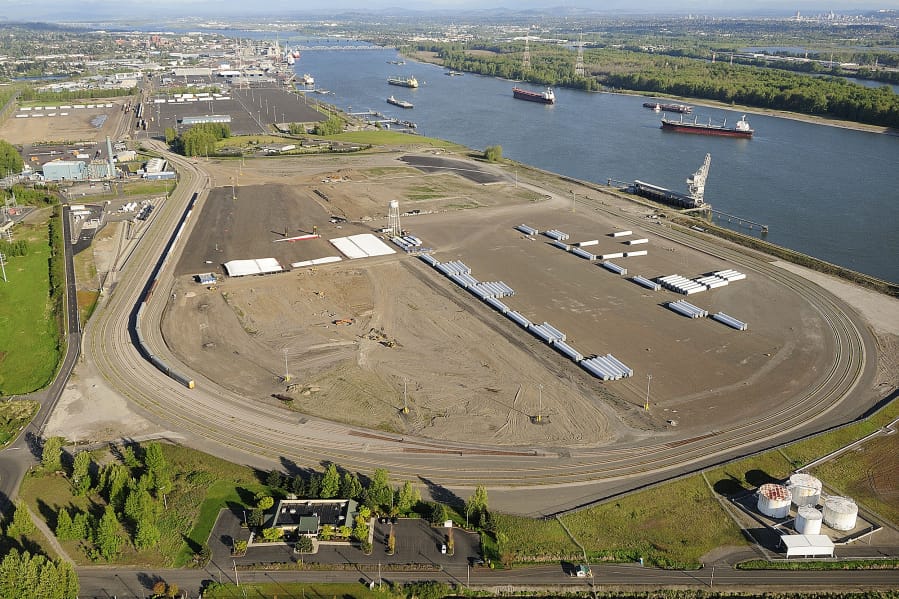A lot has happened since the Port of Vancouver comprehensively updated its strategic plan about a decade ago, and port officials have decided that it’s time to update their guiding document.
The West Vancouver Freight Access Loop is mostly built. Terminal 1 is being re-created. A new CEO is running a staff that has nearly doubled, and a different board of commissioners is in charge. But most notorious among port’s changes is the almost certain demise of the Vancouver Energy oil terminal.
“There’s certainly the question I’ve heard from a few folks, just generally regarding the port: ‘Now that we seem to be on the other side of the oil terminal discussion, what’s next?’ ” said Commissioner Eric LaBrant.
The port is in the process of setting goals and strategies for its future. It has just entered Phase 2, the plan development phase of a monthslong process that is expected to be finished around September, around which time it will be voted on by the board of commissioners. This portion of the process will include roundtable discussions with community and business groups and port staff, commission workshops that are open to the public, community conversations and eventually the draft and final plan.
“We’re definitely still in that listening phase,” LaBrant said. “I think there have been a number of interviews with stakeholders — even just initially to start getting ideas around what kinds of issues we might want to pay attention to and what sorts of things are important to our community.”
Many considerations
The port has a lot to consider as it drafts a new plan.
“This document guides everything that we do, from the corporate values that our staff performance is rated on to the projects and key initiatives that show us how to direct our resources,” said Port of Vancouver spokeswoman Abbi Russell. “And another component of the plan has not only our values, but there’s also a vision component. Where are we headed? What does it look like for us in five, 10, 20 years?”
The port has a diverse list of tenants, with lots of facilities and property along the Columbia River. At the same time, it has access to only one rail carrier, lacks deep experience in urban development and has struggled to communicate its role in the community and to engage with the community.
Through interviews with local labor groups, education leaders, workers, tribes, neighborhood leaders, elected officials and others, port officials say, they have already gotten some input as to what the port is doing well and what can be done differently in the future.
Stakeholders said the port is an economic generator of well-paying jobs for those without advanced degrees and a leader in local infrastructure development and as marine cargo shipping. They also said that the port has an opportunity to set a new course, given its recent changes in leadership, and they were also optimistic about greater parallels between the port’s goals and the community’s desires. But they also argued the port should be more engaged and communicative with the public.
Listening to public
Jim Luce, of the citizens group Taxpayers for a Responsible Public Port, said the port ”seriously misjudged the pulse of the community” when it leased property for the proposed Vancouver Energy oil terminal. Luce believes that the port might not have ever signed a lease with the companies behind the now likely doomed oil terminal had there been greater public input from the outset.
Now, he argues, the port has the opportunity to rebuild its relationship with the community, but it’s going to require a broader participation than what the port might currently have in mind.
“The public process in the past has been primarily staff driven, and I think it is primarily staff driven today. Staff are invaluable, but staff don’t vote. Staff aren’t held accountable to the taxpayers,” he said.
Taxpayers for a Responsible Public Port has forwarded a recommendation to port officials that they form a citizens advisory board comprised of leaders from local businesses, labor groups, environmental organizations, and some citizens at large to be actively involved in the drafting of the strategic plan.
“Strategic plans aren’t sexy; fighting a terminal is,” he said. “But, it’s probably, in the long run, more important than fighting the oil terminal.”




